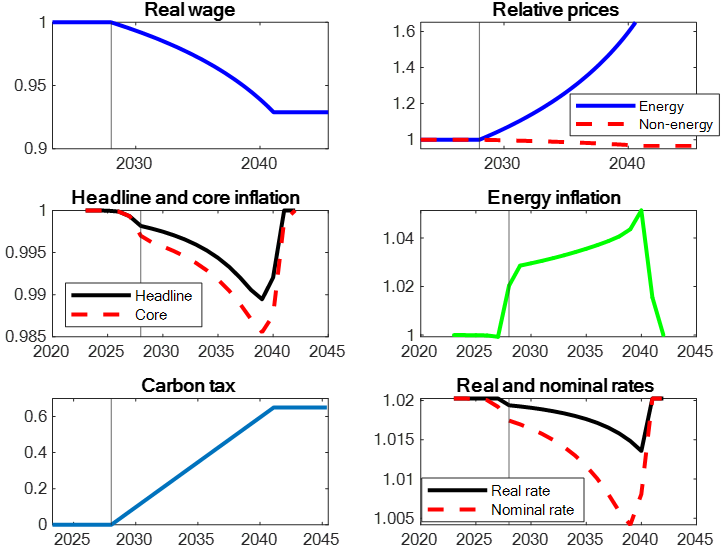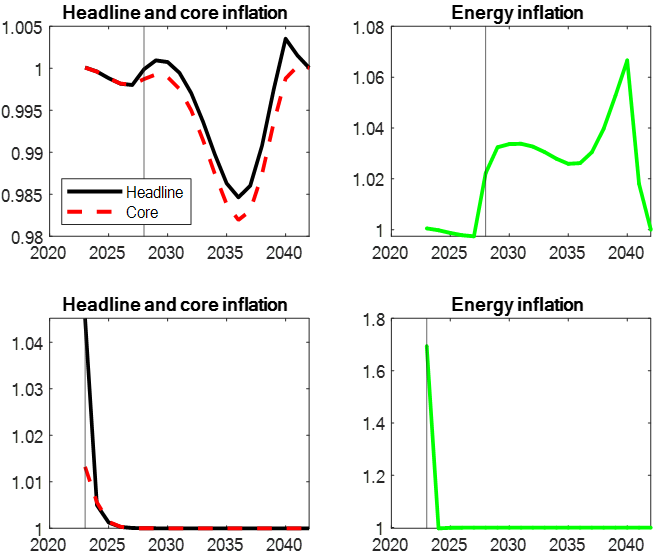References
Aoki, K. 2001. “Optimal monetary policy responses to relative-price changes,” Journal of Monetary Economics 48, pp. 55-80.
Del Negro, Marco, Julian di Giovanni, and Keshav Dogra. 2023. “Is the Green Transition Inflationary?”, Federal Reserve Bank of New York Staff Report no 1053.
IPCC, 2021: Summary for Policymakers. In: Climate Change 2021: The Physical Science Basis. Contribution of Working Group I to the Sixth Assessment Report of the Intergovernmental Panel on Climate Change [Masson-Delmotte, V., P. Zhai, A. Pirani, S. L. Connors, C. Péan, S. Berger, N. Caud, Y. Chen, L. Goldfarb, M. I. Gomis, M. Huang, K. Leitzell, E. Lonnoy, J.B.R. Matthews, T. K. Maycock, T. Waterfield, O. Yelekçi, R. Yu and B. Zhou (eds.)]. Cambridge University Press. In Press.
Hassler, John, Per Krusell, and Conny Olovsson. 2020. “On the effectiveness of climate policies,” Working paper, IIES, Stockholm University.
Hassler, John, Per Krusell, and Conny Olovsson. 2021. “Directed Technical Change as a Response to Natural-Resource Scarcity,” Journal of Political Economy, 129 (11).
Konradt, M. and B. Weder di Mauro. 2022. “Carbon Taxation and Greenflation: Evidence from Europe and Canada,” Mimeo, Graduate Institute for International and Development Studies
Olovsson, Conny, and David Vestin (2023) “Greenflation?,” Sveriges Riksbank, WP No. 420.






